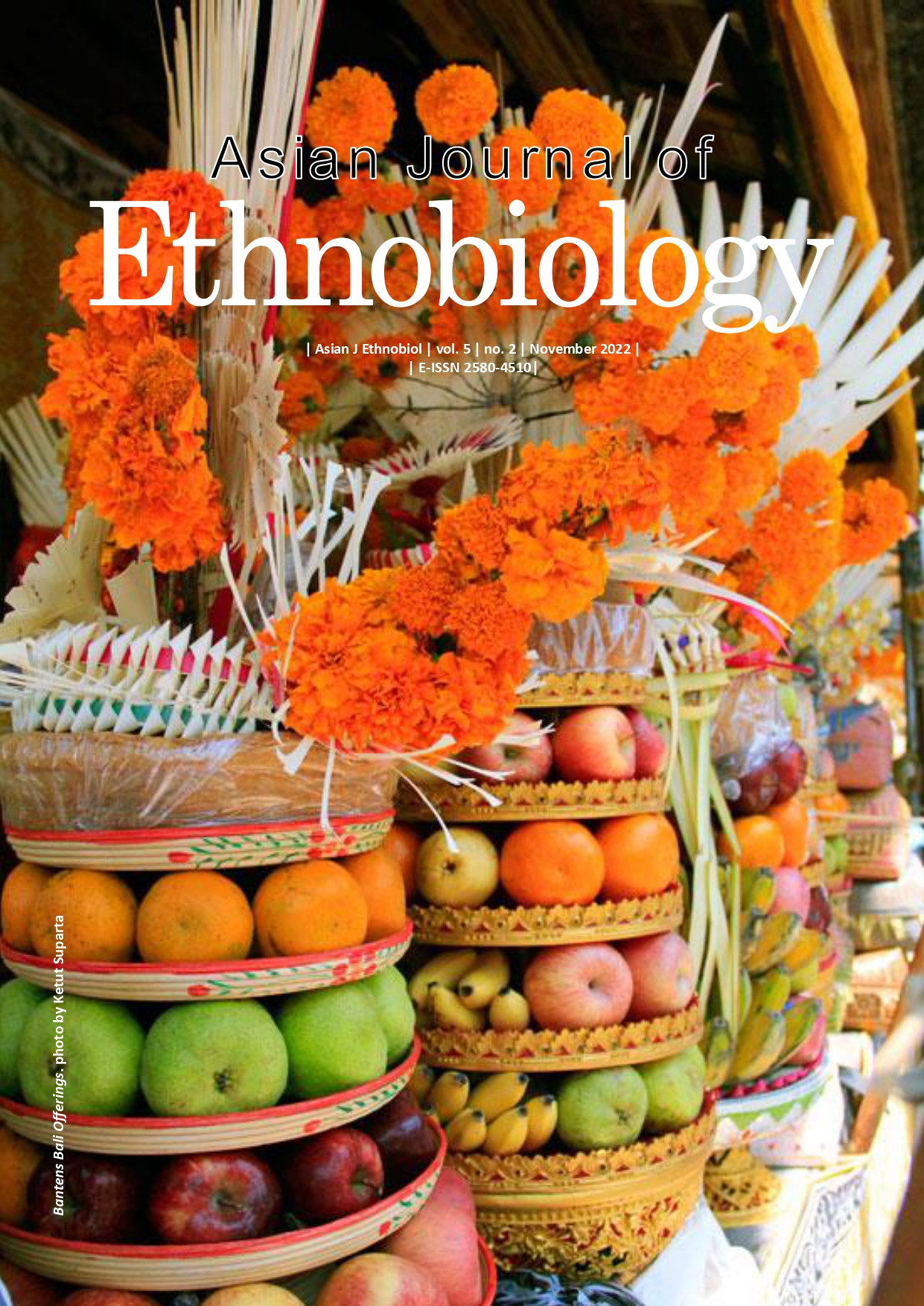Traditional knowledge of medicinal plants used in Ile-Ife, Southwestern Nigeria
##plugins.themes.bootstrap3.article.main##
Abstract
Abstract. Mukaila YO, Oladipo OT, Arogundade OO, Ajao AA-N. 2022. Traditional knowledge of medicinal plants used in Ile-Ife, Southwestern Nigeria. Asian J Ethnobiol 5: 71-83. The invaluable importance of traditional herbal medicine has necessitated systematic documentation of medicinal knowledge. This study documented medicinal plants used by the inhabitants of Ile-Ife. Ethnobotanical data were collected through semi-structured interviews with 70 informants. The interview focused on the local names of the plants, medicinal uses, plant parts used, where the plants are sourced, and methods of preparation. The data collected were analyzed and compared with previous studies using quantitative indices. The conservation statuses of the recorded plants were retrieved from IUCN online database. Eighty-seven (87) medicinal plants from 43 families were implicated to be used in Ile-Ife from our survey. Euphorbiaceae was the most implicated family with eight species; herbs (36%) were the dominant plant habit, and the leaf (46%) was the most frequently used plant part. The informants preferred decoction (37%) as the method of preparation. Over 50% of the plants were collected from the wild. The conservation status of the 26 implicated plants in this study has been accessed, 17 plants fall under the least concern (LC) category, while five species are vulnerable (VU). The study highlights the need to intensify studies on the conservation of medicinal plants and also provides baseline data for future pharmacological and phytochemical studies while preserving the cultural medicinal practices of Ile-Ife.
2018-01-01

